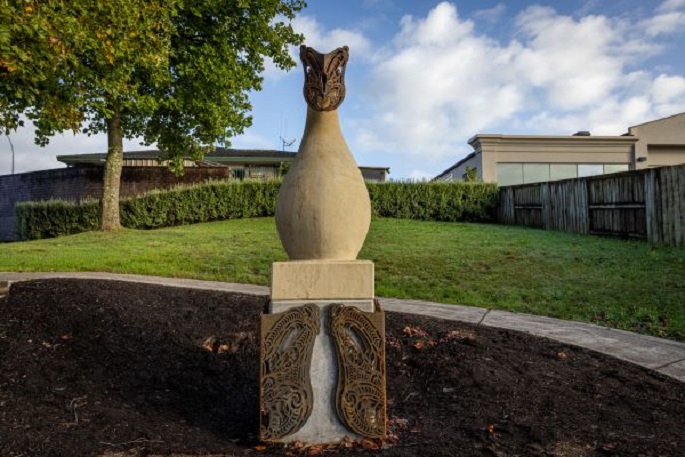In the week ahead, the Tauranga City Council Cameron Road team will continue with tidying up works along the Cameron Road corridor.
This includes the removal of temporary line marking which has now been replaced by permanent line marking, remedial asphalt work and painting on the shared path and cycleway.
This work is scheduled at nights from 6pm to 6am as weather allows.
On Tuesday, April 23 line marking will be removed in the side streets on both the east and west sides of Cameron Road, including the Eleventh Avenue, Thirteenth Avenue and Fifteenth Avenue (SH2 corner) intersections.
The team will be using high powered water blasting and there is noise associated with this work.
Remedial asphalt work will be done this week between Elizabeth Street and Second Ave east (Noel Leeming) on the footpath and cycleway.
This work will be carried out during the day and two nights Tuesday, April 23 and Wednesday, April 24.
There is also asphalt works planned for the driveways at 356 Cameron Road (Cameron Road Bakehouse café) 633 Cameron Road (Shorland Mahindra) and 705 Cameron Road (Kennards).
There are two remaining streetlights being upgraded – one in Hamilton Street and one at the Cameron Road/ SH2 intersection (opposite Academy Motor Inn).
There will be a left lane closure around the Cameron Road/ SH2 intersection at night from 6pm to 6am for one night, and the date for this work is still to be confirmed.
In the coming weeks, testing will be underway along Cameron Road to ensure the road surface meets compliance standards.
This is a standard procedure for an infrastructure project of this nature. As part of this process, the team will be undertaking coring, which involves drilling samples from the road surface through several intersections along the corridor.
These samples will be taken away for laboratory testing. The purpose of coring is to assess the density and strength of the road surface to ensure its longevity.
The team will be working to minimise disruption however, the process of coring is noisy because it involves drilling in several locations.
Drilling each hole takes approximately 10 minutes, then the hole is back filled.
These works will be undertaken at nights from 6pm to 6am, so that roads can be open during the day. Coring at each location is expected to take one to two nights, with the road reopened in the morning.
"We ask that you please follow posted detours and adhere to the speed limits and any instructions from our team," says a council spokesperson.
"We are still putting together a timetable for coring however we do expect it to occur in the coming weeks.
"We will be in touch with more information as it comes to hand."
Coring samples will be being taken through the following intersections with Cameron Road: Elizabeth Street, Third, Sixth, Ninth, Eleventh, Thirteenth and Fifteenth Avenues.
"We thank you for your patience and understanding while these essential works are underway."
Site investigation works - Cameron Road Stage 2
Investigation of underground services along Cameron Road from 17th Avenue to Maleme Street in Greerton, and along Pyes Pa Road between Havenbrook Way and Cheyne Road has been under way since Wednesday, April 10, and will continue for approximately seven weeks.
Most work will be off-road and any work within the road itself will be done at night to minimise disruption.
Lane closures are not expected however investigations will be undertaken at approximately 10-15km per hour, so traffic management may be required around the slow-moving survey vehicle.
The work involves using ground penetrating radar (GPR) to locate underground services such as pipes, cables and equipment associated with electricity, gas, water and telecommunications.
"It is expected to have minimal noise impact," says a council spokesperson.
"This work helps to direct physical investigation works such as potholing and minimises the need for multiple holes to be dug up along the road."
The information gathered will be used to inform the future design of infrastructure underneath Cameron Road.
The work on the footpaths and verges will be undertaken using a push buggy that will be walked over these locations.
This is a quiet method to detect utilities in areas where traffic management is not required and should have minimal disruption to path users who should be able to navigate around the surveyors



0 comments
Leave a Comment
You must be logged in to make a comment.